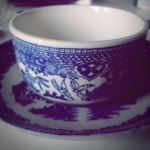In the 19th century cleaning routines were quite different to how we do things today. Many homes didn’t yet have running water and if they did that water was usually unheated. This was true even for large manor houses with dozens of servants. But, with all those employees the one thing they weren’t short on was elbow grease. Many of the pans used in large houses were copper lined with tin and each one needed to shine like the sun in order to be deemed acceptable.
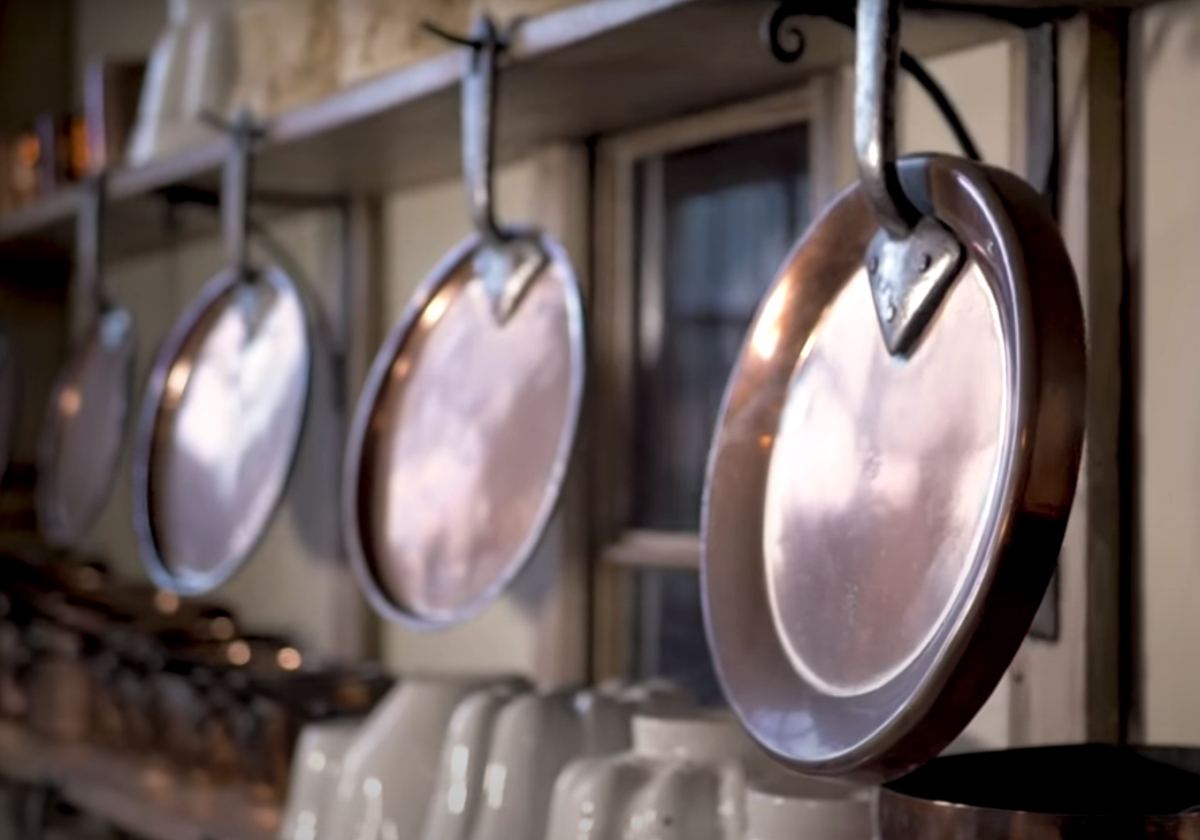
A mixture of soft soap and salt was used to clean the outside of copper pans and molds. Soft soap was a brownish goop made in the traditional way of adding wood ash containing lye with fats (usually animal tallow). This watery mixture was left to cure for one month to prevent the lye from burning the skin, but even cured soap could still sting the hands. This was the cheapest form of soap during the era and could be purchased by the bottle, but was more commonly bought by the barrel. Bar soap required more effort to produce as the water had to be reduced and the bar molded or cut before being cured.
The soft soap and salt mixture was rubbed onto the pan using a lemon cut in half. Then the mixture was allowed to sit on the copper. This homemade cleaning solution had abrasion from the salt, cleaning from the soap, and the acidic power of the lemons to make the tarnish disappear. Many people still swear by this method for cleaning lots of things.
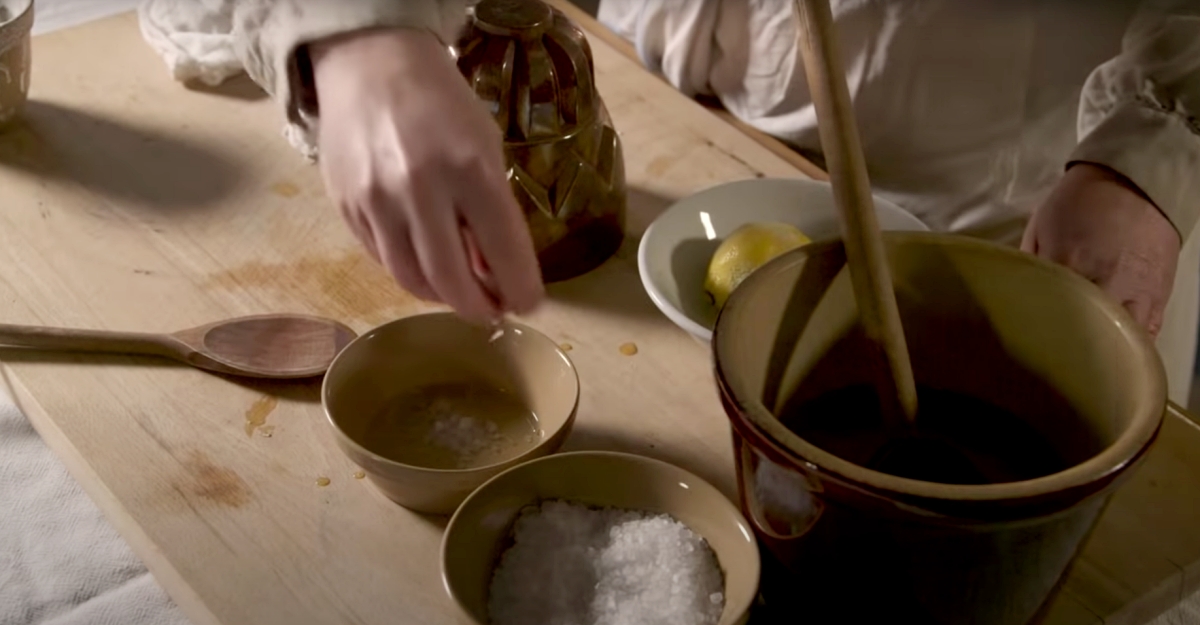
Pudding cloths used to make boiled puddings had to first be soaked, then washed, then scalded in boiling water, then dried completely before they could be used again. No soap was used in the process as any residue could affect the taste of future puddings. Sure makes having a washing machine seem like a dream compared to all that.

Pans with baked on or stubborn food residue were soaked with washing soda, sometimes repeatedly, until the residue began to lift.
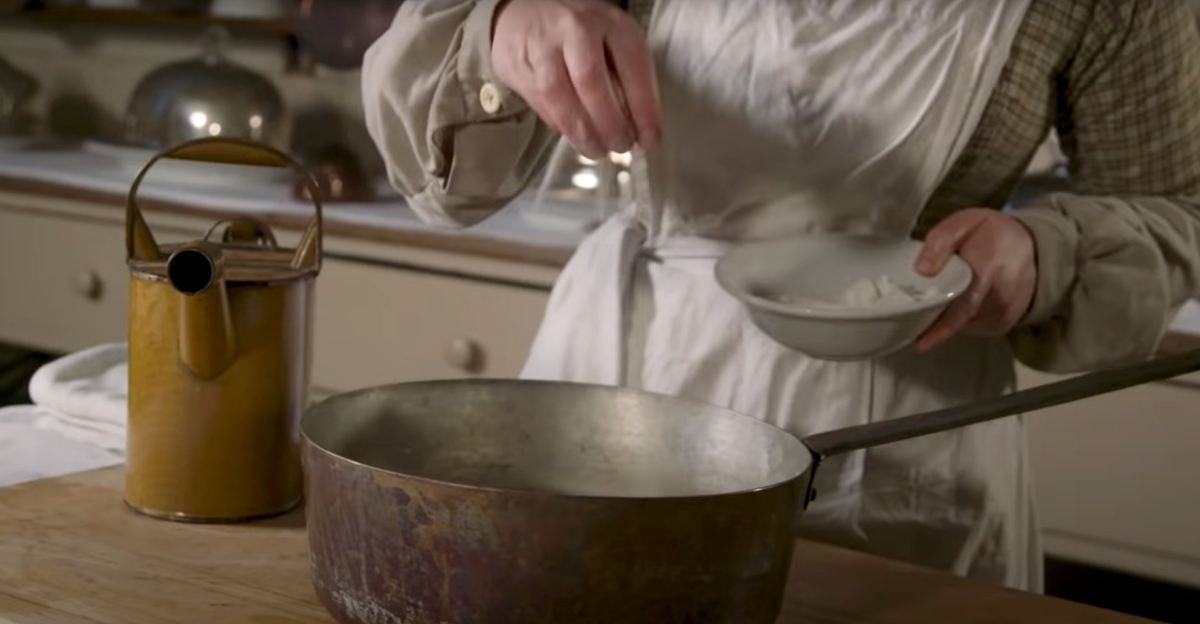
Frying pans were cleaned of grease by using stale bread to absorb the oil. Nothing was wasted in the old days. But, of course, if there were no pans in need of cleaning the bread could have been made into a stuffing, breadcrumbs, or fed to the chickens or pigs.

In a large house the cooking implements would have been cleaned by the staff under the cook. Fine china would have been handled by the maids who reported to the head housekeeper, and the silver would have been the purview of the butler and his direct staff.
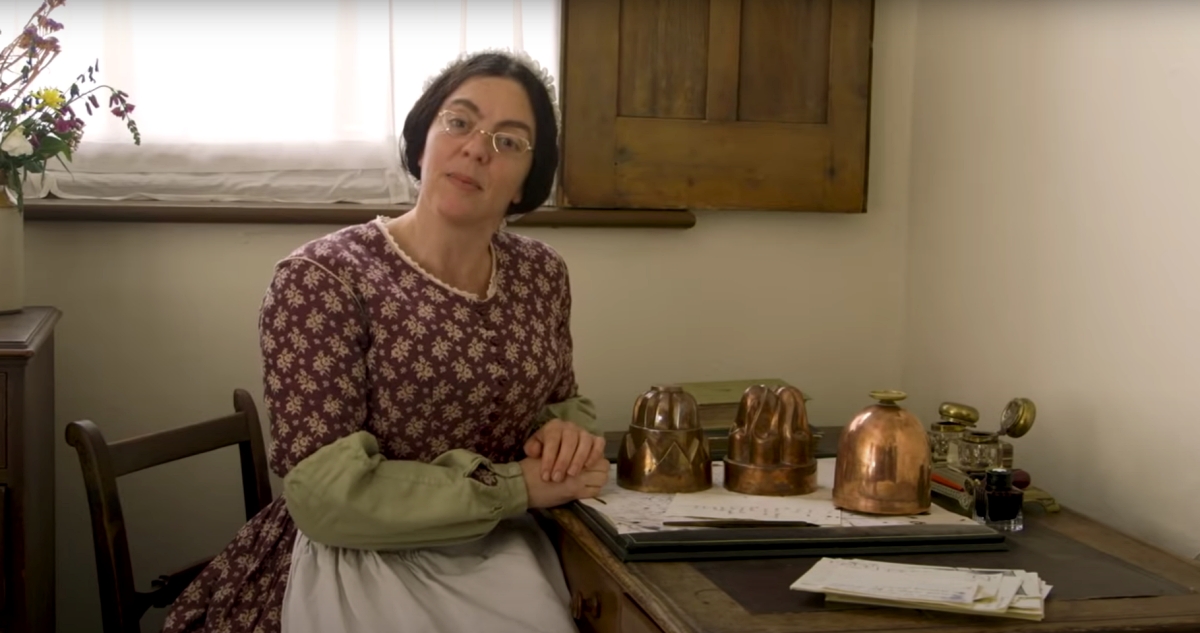
Learn from historical interpreter, Mrs. Crocombe, how all these things would been cleaned at Audley End House during the Victorian era.













